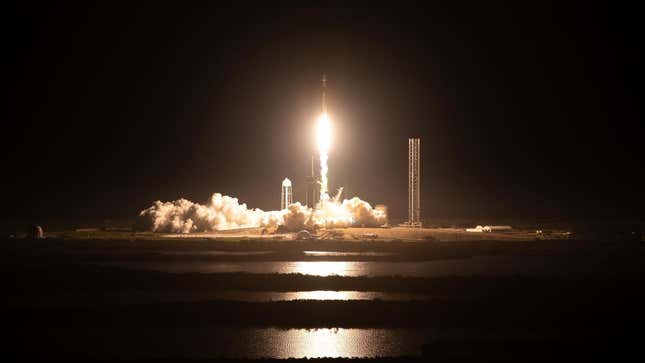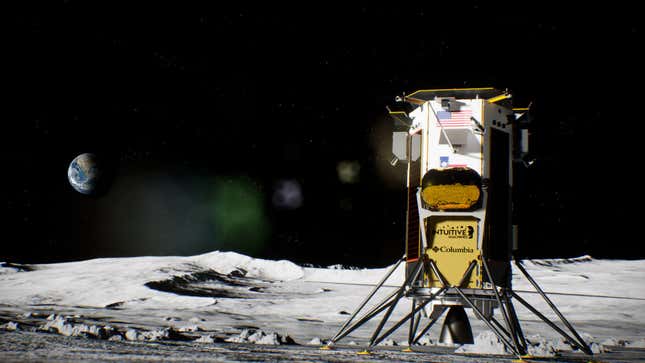Intuitive Machines’ Odysseus lander has begun its eight-day voyage to the Moon. The mission is fraught with peril, as every previous attempt by private companies to land softly on the Moon has ended in failure. Here’s what needs to go right for this Houston-based company to enter into the history books.
In the latest effort to return the United States to the lunar surface, Intuitive Machines, under an $118 million contract with NASA, launched its Nova-C class lunar lander, Odysseus, early Thursday morning aboard a SpaceX Falcon 9 rocket. The launch marks the second mission of NASA’s Commercial Lunar Payload Services (CLPS) initiative, following Astrobotic’s Peregrine’s failed attempt due to a valve issue. Through CLPS, NASA seeks to facilitate a steady stream of cargo deliveries to the Moon for both governmental and commercial purposes.

Odie, as the lander is affectionately known, is targeting a landing at Malapert A crater, a site 43 miles (69 kilometers) wide and about 186 miles (300 km) from the lunar south pole. This crater, composed of lunar highland material similar to the Apollo 16 landing site, is near the Malapert Massif, one of the 13 regions considered for NASA’s crewed Artemis 3 mission.
So far, so good. The lander, carrying one dozen payloads (including six for NASA), successfully established its presence in space by stabilizing its orientation, initiating solar charging, and establishing radio communications with the mission operations center in Houston, according to an Intuitive Machines update. Odie reached its intended Earth orbit approximately 48 minutes after launch and established first communication at 1:59 a.m. ET.
Considering Peregrine’s early exit from its mission, we don’t take any of this for granted, but there’s still plenty to go. The company has outlined 16 major objectives for the mission, with the first two, launch and separation from the rocket, already accomplished.
The subsequent steps include autonomous commissioning, engine commissioning, and three trajectory correction maneuvers. After reaching the lunar environment, Odysseus will execute a series of maneuvers for a soft vertical landing, including entering a descent orbit, engaging in terrain relative navigation (a process in which a spacecraft uses onboard sensors to map and navigate the lunar surface), performing a pitch over maneuver, and employing hazard detection and avoidance systems.

“We are keenly aware of the immense challenges that lie ahead,” Steve Altemus, Intuitive Machines CEO, said in the press release. “However, it is precisely in facing these challenges head-on that we recognize the magnitude of the opportunity before us: to softly return the United States to the surface of the Moon for the first time in 52 years.”
Odie will attempt to land at a velocity of 3.3 feet per second (1 meter per second), with the flight controllers expecting a 15-second delay before confirming its successful landing on February 22. Following the landing, Intuitive Machines and its partners will conduct science investigations and technology demonstrations for approximately seven days before the frigid lunar night sets in, rendering the lander inoperable.
Related article: A New Mission to the Moon Is Set, But Can We Just Not With the Space Garbage?
This mission represents a significant step in lunar exploration, with private firms yet to accomplish a soft landing on the Moon. To date, only five national space agencies—the United States, Soviet Union, China, India, and Japan—have achieved this feat, with Japan’s SLIM lander doing so this past January, even if the landing was slightly imperfect.
For more spaceflight in your life, follow us on X (formerly Twitter) and bookmark Gizmodo’s dedicated Spaceflight page.

